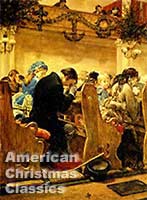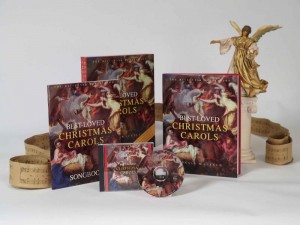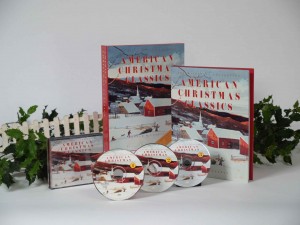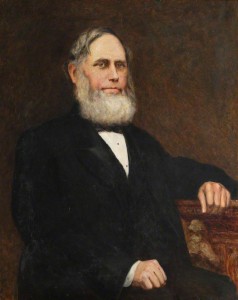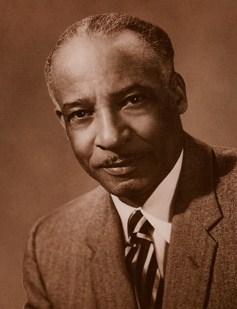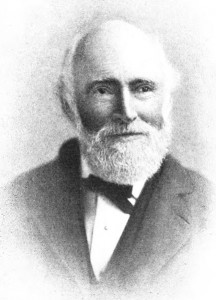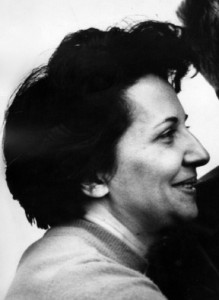Emile Waldteufel and The Skaters Waltz
Emile Waldentedufel, the noted Alsatian waltz composer, was born on this day in 1882. He composed the delightful Les Patineurs (The Skater’s Waltz), in addition to over 250 other waltzes, many of them while he was chamber musician to the Empress Eugenie (1826-1920) of France.
During the second half of the 19th century the waltz as a music form enjoyed immense popularity in many countries of Europe, including France. This new style, developed to high art by Viennese composers, especially Johann Strauss the Younger (1825-1899), achieved widespread recognition faster than any music form preceding it.
The patronage of Franz Joseph (1848-1916), the Austrian Emperor, certainly helped its rise, but the phenomenon of country folk song and dance being fused into urban artistic entertainment was more influential in making waltz music popular to a wider audience. Public open-air concerts became more common, providing an environment for military music (such as marches which were the rage in the first half of the 19th century), folk song and dance, and excerpts from operettas that formerly only entertained the royal court and high society.
Besides the waltz, ice-skating was a popular pursuit in France and other more northern European countries, as well as in the United States. Emile Waldteufel accommodated his fellow countrymen by fusing the two recreations in Les Patineurs (Op.183), and his musical canvas comes alive with the spirited sounds of skaters gracefully waltzing across the ice.
Christmas Eve 2013: Gratitude and Fisher House
Today is Christmas Eve, a much anticipated day on the Christian calendar that serves as a prelude to the birth of our savior Jesus Christ. For many of us it a day of evening worship at our parish church and a time to reflect on the meaningful story of Christmas so richly illuminated by the Gospel of St. Luke.
For me personally Christmas Eve floods me with childhood memories about going to midnight Mass and hearing a choir of nuns sing carols so beautifully that their notes seemed to spiral heavenward as though on the wings of angels. That warm and intoxicating experience has often been rekindled each Christmas Eve, especially today when I took time from doing last minute Christmas shopping to re-read several e-mails I recently received from Fisher House managers from across the country regarding the donations of Best-Loved Christmas Carols and American Christmas Classics, my two best-selling, highly illustrated Christmas music collections
Two of those e-mails were particularly poignant. Heather Frantz from the Fisher House of Pittsburgh wrote: I just wanted to let you know that we handed out your boxed collections to our guests this past Wednesday at our Christmas Party and they absolutely LOVED them!!!!!! We had several wives who were so touched by the gift that they teared up and they all opened them and couldn’t believe how amazing the book was and all of the stories and history behind the songs that they all love so much. Thank you so very much for providing such a joyous gift for our guests!!! Merry Christmas to you!
The second response came from Kristin Palmer, Fisher House of San Diego. I just wanted to follow up with you and let you know we received and have been distributing your Christmas collections to our families. I can tell you personally each family I have talked to is touched and awed by your generosity. The holiday season on a good day can be stressful enough, but to have to also deal with a loved one in a medical crisis compounds that stress. I gave the CDs to a mother whose 18 year old Marine is receiving cancer treatments. She was very moved, and thankful. Fortunately in her case she will be able to bring her son home for the holidays, and she said they would be listening to them and letting everyone they know about the generosity of the Fisher House and those that support it. For the rest of the families that will have to remain here for the holidays, at least they will have a little Christmas spirit and know someone was thinking of them during the holidays. Again, thank you and God bless!
The sentiments conveyed by Fisher House military families are similar to the feelings I had when the Knights of Columbus, SKF Industries, Villanova University students, and others annually feted us at St. John’s Orphanage in Philadelphia during the Christmas holidays. I fondly remember, along with hundreds of other orphan boys, the warm afterglow of being a starry-eyed recipient of carefully wrapped Christmas presents that were more precious than gold.
To hear that the joy of my Christmas days of yore has been replicated and found expression in the hearts of Fisher House military families truly humbles me. As it should for one who has benefited much from the Christmas spirit.
Merry Christmas!
Not too Late! Great Christmas Gifts for Military Families
It’s not too late! Please RT about Christmas Classics Ltd. support of the Fisher House Foundation this Christmas season. PRESS RELEASE
A great provider of free housing and comfort for military families in need of special medical care, the reputable foundation will benefit from the sale proceeds of Christmas Classics Ltd.’s two highly acclaimed Christmas music box collections, Best-Loved Christmas Carols and American Christmas Classics.
In addition, these premier collections are being donated to thirty-three Fisher Houses located across the country.
With the purchase today of Christmas Classics prized collections, described by customers and media alike as “great gifts,” you will make this Christmas season truly memorable, not only for your family and friends, but also for many of our military families who have suffered so much and yet have asked so little.
Merry Christmas!
Ronald M. Clancy
www.christmasclassics.com
Christmas Classics PERSON OF THE DAY: John Troutback
On this day in 1832, John Troutback was born in Blencowe, Cumberland, England. He was a noted English translator of famous musical texts and an Anglican priest who served as chaplain to Queen Victoria during his tenure as Minor Canon at Westminster Abbey (1869-1899). The Rev. Troutback had previously held the position of Precentor at Manchester Cathedral from 1865-1869.
For purposes of distinction in the Anglican Church, a Minor Canon is usually a junior clergy staff member of a cathedral or collegiate church who participates in daily services. A Precentor, too, is a clergy member, generally part of a large church, whose charge is to prepare and organize liturgy and worship services.
The Rev. Troutback arranged many of the royal services at Westminster Abbey, most notably the 1887 Golden Jubilee service for Queen Victoria. In addition to devoting much of his life’s energy to church music, including editing Westminster Abbey Hymn Book (1883), several chant books, and The Manchester Psalter a few years prior to his assignment to Westminster Abbey. A possessor of a very fine voice, he was also the author of Church Choir Training.
Troutback’s greatest claim to fame, however, was his English translations of German, French, and Italian operas, songs, and oratorios for the British music publisher Novello. The Who’s Who List of his translations included Johann Sebastian Bach’s St. Matthew Passion, St. John Passion, Magnificat, and Christmas Oratorio.
The Christmas Oratorio (German Weihnachts-Oratorium) by Bach was one of three oratorios written near the end of his career and his last major contribution to the Lutheran Church. It was intended to conform to the church calendar for the 1734 Christmas season and to be performed on six successive Sundays during Advent and the Christmas season at two churches – St. Thomas and St. Nicholas in Leipzig. The oratorio incorporated six cantatas from earlier Bach compositions, some of them secular in tone, which caused some Lutheran Church elders to have problems with the great composer’s discarding of some hymn texts in favor of poetical passages and the interjection of a number of chorales, choruses, and arias of a non-Scriptural nature into the sacred work. The oratorio’s recitative and chorale settings, however, were original Bach compositions.
Bach received inspiration for his work from both the St. Luke and St. Matthew versions of the Nativity, especially since together they gave a more complete narrative of Christ’s birth. He believed the St. Luke 2:1-21 gospel had greater poetic qualities than the gospel of St. Matthew 2:1-12. However, St. Matthew’s story was particularly attractive to Bach since it recounted the tale of the Three Wise Men, leading Bach to attach greater significance to the Magi in the concluding passages of the oratorio.
The finished oratorio was broken into six parts, each to be performed on one of the major feast days of the Christmas period as follows:
Part I: The Birth of Jesus (Christmas Day)
Part II: The Annunciation to the Shepherds (December 26)
Part III: The Adoration of the Shepherd (December 27)
Part IV: The Circumcision and Naming of Jesus (New Year’s Day)
Part V: The Journey of the Magi (First Sunday after New Year)
Part V: The Adoration of the Magi (Epiphany – January 6).
Despite its original three hour length, the Rev. Troutback must have been elated to take on the task of translating Bach’s marvelous Christmas opus. In 1874 Novello published it along with Rev. Troutback’s English translation of Bach’s Magnificat.
For his distinguished service to his church, the Rev. Troutback in now buried with his wife in the East Cloister of the Westminster Abbey.
Christmas Classics PERSON OF THE DAY: William L. Dawson
On this day in 1898, William Levi Dawson was born in Anniston, Alabama. He was an acclaimed African-American composer, conductor, and trombonist who wrote a wonderful arrangement of the Christmas spiritual Mary Had a Baby, a carol with two distinct lyrical texts. In some circles Dawson was called the “father of the Negro spiritual” although such a sobriquet might be contested by the John Works family also noted for its scholarship of Negro folk music.
Dawson was determined to earn a music education. Although black students were prohibited from attending classes, several professors helped him to clandestinely pursued his bachelor degree at night from the Horner Institute of Fine Arts in Kansas City. By day he taught at the city’s Lincoln High School. His formal studies continued at the Chicago Musical College and the American Conservatory of Music, the latter from which he earned his master degree. He also enjoyed a career as a trombonist for both the Civic Orchestra of Chicago and Redpath Chautauqua, a campground assembly that usually gathered during the summer for music events or literary, moral, and scientific lectures.
The composer’s career, however, was primarily devoted to teaching at the college level. In 1931 he went to teach at Tuskegee University in Alabama where he soon himself the founding chairperson of its School of Music. During his tenure at Tuskegee, ending in 1956, Dawson achieved greatness as a composer. His body of work included arrangements and variations of spirituals, including his popular Ezekiel Saw the Wheel, King Jesus is a-Listening, and Jesus Walked the Lonesome Valley, and other spirituals that are widely published and regularly performed by school and community choral programs. In the classical realm, he is best known for Negro Folk Symphony, reputedly the first of its kind by a black composer, which premiered in 1934 with the Philadelphia Orchestra under the direction of the dynamic Leopold Stokowski.
The lyrical text of Mary Had a Baby may date from the 18th century when it was probably sung at religious revival camp meetings where a “call and response” technique was utilized to unify the congregation in worship. After the Civil War, this musical style became more prevalent in black churches, especially those of the rural South, whose members learned it from their ancestors, almost all of whom were slaves.
As with most of his arrangements, Dawson employed black folk song idioms to Mary Had a Baby, an important addition to AMERICAN CHRISTMAS CLASSICS . Inspired by the spiritual text, he creates a heightened sense of dignity, despite the humble manger setting, of Mary the mother giving birth to her baby who is richly exalted as “King Jesus.”
Christmas Classics PERSON OF THE DAY: William J. Kirkpatrick
On this day in 1921, William J. Kirkpatrick died in Philadelphia. The son of a school teacher and musician, he was responsible for writing one of the more familiar arrangements for Away in a Manger.
Born in Duncannon, Pennsylvania, Kirkpatrick went to Philadelphia to learn music and carpentry. His ambition was to be a violinist, which was hampered as he plied his trade as a carpenter. At the age of thirty-four he began to devote more time to sacred music after joining the Wharton Street Methodist Episcopal Church in Philadelphia. As a member of the Harmonia and Handel and Haydn Sacred Music Societies, Kirkpatrick gained more exposure to the principal choral works of great composers. After the death of his first wife in 1878, he finally gave up his trade and dedicated his life solely to sacred music and composition, as well as being involved with the publication of forty plus hymnals.
Kirkpatrick’s tune for Away in a Manger, commonly known as The Cradle Song, is most used in England. The Cradle Song was first written in 1895 for the musical Around the World with Christmas. In the United States the tune most heard for Away in a Manger is associated with James Ramsey Murray (see my March 11, 2011 blog).
The anonymous lyrics for Away in a Manger likely were written by a member of the German Lutheran colony in Pennsylvania during the late 19th century. The words for the first two stanzas may have first appeared in 1885 in the Little Children’s Book for Schools and Families, a publication of the Evangelical Lutheran Church in North America. It is possible, however, that they first appeared in the May 1884 edition of The Myrtle, a Universalist Publishing House Boston publication, as Luther’s Cradle Hymn to commemorate the 400th anniversary of the birth of Martin Luther, the great German religious reformer. By the 1940s it was proven conclusively that the original lullaby tune had actually been composed by James Ramsey Murray, supposedly the same person who perpetrated the myth of Luther’s Cradle Hymn. Murray’s lullaby was included in an 1887 Cincinnati collection called Dainty Songs for Lads and Lasses.
Although many modern hymnals attribute the lyrics of the third stanza to John T. McFarland, a member of the American Lutheran Board of Sunday Schools, it is believed he had merely made reference to it. Instead, the third stanza, which first appeared in an 1892 Louisville, Kentucky, Lutheran Church collection titled Gabriel’s Vineyard Songs, was probably the contribution of another anonymous author. This lyrical addition strengthens the inherent tenderness of this renowned American carol hymn.
Three years later Kirkpatrick wrote the tune The Cradle Song for the musical Around the World with Christmas. Again, it is that tune that serves as Kirkpatrick’s arrangement for Away in a Manger.
Pennsylvania Germans and Moravians, besides being credited as the source for the anonymous lyrics of Away in a Manger, were unique in other aspects of Christmas. They celebrated the humble beginnings of the Christ Child by employing a Christmas decoration called a putz (from the German word “putzen” meaning “to adorn”), for the manger scene. The Moravians, furthermore, may even have played Away in a Manger in their trombone choirs that were known to perform from church belfries in Bethlehem, Nazareth, and other Pennsylvania towns with Moravian congregations.
Bethlehem, the site of the first Moravian church built in eastern Pennsylvania, was so named on Christmas Eve in 1742 when construction of the church was completed. That special night settlers sang in one room of the new structure while cows mooed in the other half, which served as a stable. The scene so moved the congregation, reminding them of events surrounding the birth of the Christ Child in another small town eighteen hundred years earlier, that they christened their settlement Bethlehem.
Christmas Classics PERSON OF THE DAY: Mel Tormé
On this day in 1925, Melvin Howard Torma, better known as Mel Tormé, was born in Chicago to a Russian Jewish family. He was an accomplished and well-liked jazz composer, scat singer, author, and actor for television and movies. In Christmas music circles he is best known as co-author, along with Robert Wells, of The Christmas Song (a.k.a. Chestnuts Roasting on an Open Fire).
During the World War II years Tormé moved to California, enlisted in the Army, and started his own quintet Mel Tormé & the Mel-Tones. B y 1947 he decided to strike out on his own and then went on to develop a reputation as a cool jazz singer. He did not disappoint in 1948 with Careless Arms, a number one hit. In all “The Velvet Fog” a sobriquet Tormé detested, is credited with 250 songs and the arranger for a host of songs he sang for several recording companies, including Decca and Capitol Records. For a time in the 1960s he was the principal song writer and music arranger for The Judy Garland Show and by the 1970s with the resurgence of jazz singing his career was revitalized and from that time forward he remained a presence in the jazz world until his death.
How Tormé became associated with one of the most popular Christmas songs for the past seven decades is one for the books. During a terrific heat wave besieging Los Angeles in July of 1945, the songwriter Robert Wells sat at his piano and tried to find solace from the heat by jotting down several lines of lyrics with wintry themes. “It was so damn hot, I thought I’d write something to cool myself off,” he once said. “All I could think of was Christmas and cold weather.” While in this mood, his good friend Mel Tormé paid a visit. When Tormé noticed the notes Wells had put to paper, he suggested to him that they just might have the beginnings of a Christmas song.
Within twenty or forty-five minutes, depending upon who’s telling the story, the two songsters produced The Christmas Song. Tormé then went to the home of Nat King Cole and convinced him to record the song, and in the Spring of 1946 Nat went into a New York recording studio with a simple piano version of the song. The initial results weren’t satisfactory, and at the urging of his wife Maria and manager, the mellifluous singer responded with a more highly regarded version with strings and full orchestra. It was Cole’s exquisite recording that popularized the song, and over the years The Christmas Song has consistently ranked as one of America’s seasonal favorites.
Considered an historic recording, the song was honored in 1999, as was Tormé himself for life time achievement, by being inducted by the Grammy Awards organization into its Hall of Fame.
The Christmas Song has truly stood the test of time. This is quite understandable because it was written during an age when composers like Tormé produced music marked by grace and charm. In retrospect it is easily understood why his passing was mourned by many, especially by those nostalgic for such memorable musings from “Chestnuts roasting on an open fire” . . . to . . . “And so I’m offering this simple phrase, To kids from one to ninety-two; Although it’s been said many times, many ways, “Merry Christmas to you.”
Christmas Classics PERSON OF THE DAY: William Chatterton Dix
On this day in 1898, William Chatterton Dix died in Cheddar, Somerset, England. He was bequeathed the middle name of Chatterton in honor of Thomas Chatterton, a poet whose biography was penned by Dix’s father. For a better part of his professional life Dix was a marine insurance agency manager, yet he is best known as the Christmas carol composer of the English carols What Child Is This? and As with Gladness Men of Old.
The insurance executive always nurtured a great love for poetry and hymns. His interest in both was accentuated at the age of twenty-nine when a near fatal illness and severe depression confined him to bed for months. It was also during this period when Dix wrote most of the forty hymns credited to him, including his most popular carol What Child Is This?
The lyrics for What Child Is This? were initially part of a six-stanza poem titled The Manger Throne. Dix later took three of the poem’s stanzas and adapted them to the popular 16th-century tune of Greensleeves. In 1871 both text and tune, the latter arranged by John Stainer, were published in Bramley & Stainer’s Christmas Carols, New and Old, a widely circulated compilation.
The beautiful folk melody of Greensleeves dates from Elizabethan times, perhaps even earlier, and reputedly it had less respectable lyrics sung to it in several lyrical settings. One of the earliest references to it was in 1580, and it was twice mentioned in Shakespeare’s comedy play, The Merry Wives of Windsor. In the 1642 New Christmas Carols black-letter edition, a variant tune of Greensleeves was used in the carol The Old Year Now Away Is Fled. Strains of the melody were also heard in John Gay’s 1728 satirical ballad opera, The Beggar’s Opera.
The providence of history is such that Greensleeves might be much lesser known if not for a strange illness that befell William Chatterton Dix. His effort to string religious pearls from his lengthy The Manger Throne, and the sometimes less respectable Greensleeves tune, ultimately prove successful with the issuance of What Child Is This? Since its 1871 publication, the beloved carol has been sustained by repeated publication and acclaim for its reverential treatment of the Nativity theme.
Christmas Classics PERSON OF THE DAY: John Sullivan Dwight
On this date in 1893, John Sullivan Dwight died in Boston. He was one of the more compelling figures from Harvard University who were Christmas carol composers or translators. They included among others, Edmund Hamilton Sears (It Came upon the Midnight Clear), Henry Wadsworth Longfellow (I Heard the Bells on Christmas Day), and Rev. Phillips Brooks (O Little Town of Bethlehem). Dwight’s contribution was providing the English translation for O Holy Night after the French carol Cantique de Noël.
After graduating from Harvard Divinity School, John Sullivan Dwight served as a Unitarian minister in Northampton, Massachusetts. But his stay there was short-lived. He had to leave the ministry because he became deathly ill when he had to deliver sermons to his congregation. After leaving the ministry he became a recluse and then sojourned to the socialistic Brook Farm community, of which he was one of its founders. For five years there he lived a transcendental life teaching classical languages and music. Life on the commune also meant time for farming, cutting wood, cultivating trees, and other chores.
Eventually he returned to Boston and devoted himself to literature where he became America’s first influential classical music critic writing for Dwight’s Journal of Music. For several years it was the only musical journal in the country.
Dwight also cultivated an interest in European carol tunes, particularly the French carol Cantique de Noël (a.k.a. Minuit Chrétiens). A carol with an intriguing history, it became much disliked by French church authorities even though it had originally been well received by them and the church faithful. This turnabout led to criticism about the carol’s perceived lack of musical taste and because it did not possess the “spirit of religion.” But the repudiation of the carol may have been due to Placide Cappeau, the carol lyricist, and his socialist leanings and later renunciation of Christianity; not to mention the fact that Adolphe Adam, the composer of the carol melody, was Jewish.
Thirteen years after Dwight’s death the carol had the distinction of being the first ever heard on the radio. On Christmas Eve in 1906 ships at sea heard O Holy Night being played on a violin.
- John Sullivan Dwight
Christmas Classics PERSON OF THE DAY: Gloria Shayne
On this day ninety years ago, Gloria Adele Shain was born of a Jewish family in Brookline, Massachusetts. She changed her name to Gloria Shayne early in her professional career as a pianist and composer. In the 1940s she moved to New York,and it was there where she made her mark.
In the world of Christmas music she is famed for composing Do You Hear What I Hear? in collaboration with her husband Noel Regney, a Frenchman.
The Shayne and Regney union was a story of romance. They met in the early 1950’s when the Frenchman came to the Beverly Hotel in New York, now known as the Benjamin Hotel, where Shayne was playing the piano. Both were duly smitten on their chance meeting and a month later the two lovers were married.
Do You Hear What I Hear?, although often taken for a Christmas carol, was actually composed by the husband and wife team as a hymn of peace, one borne out of a sense of desperation and fear of war because of the looming Cuban Missile Crisis. Both composers had not forgotten about the horrors of war. During the World War II years Shayne worked for the Jewish Welfare organization at a time when millions of Jews were being slaughtered by the Nazis. Regney, trained as a classical composer, witnessed its terror first hand when he was conscripted by the German Army, even though he was a Frenchman, but soon deserted it to join the French Resistance.
Shayne and Regney were especially fond of the phrase “Pray for peace, people everywhere!” in the carol’s last stanza because it emphasized the rationale for the song. Somehow their hymn of peace became part of the Christmas carol repertoire, perhaps because of Regney’s lyrical imagery of lamb, shepherd boy, and the Child Jesus sleeping that could easily be associated with the Nativity scene.
Shayne and Regney collaborated on a number of famous songs, including Rain, Rain Go Away first performed by Bobby Vinton and Sweet Little Darlin’ first performed by Jo Stafford. But she also enjoyed success on her own, including writing the music and lyrics for Goodbye, Cruel World, recorded by James Darren, and co-writing The Men in My Little Girls’ Life, performed by Mike Douglas, and Almost There that was first sung by Andy Williams.
Gloria Shayne divorced Noel Regney in 1973. She remarried, and in 2008 she died at home in Stamford, Connecticut of lung cancer. She will be most remembered here for her contributions to Do You Hear What I Hear?, a song of peace that eventually spawned a lovely Christmas carol.

